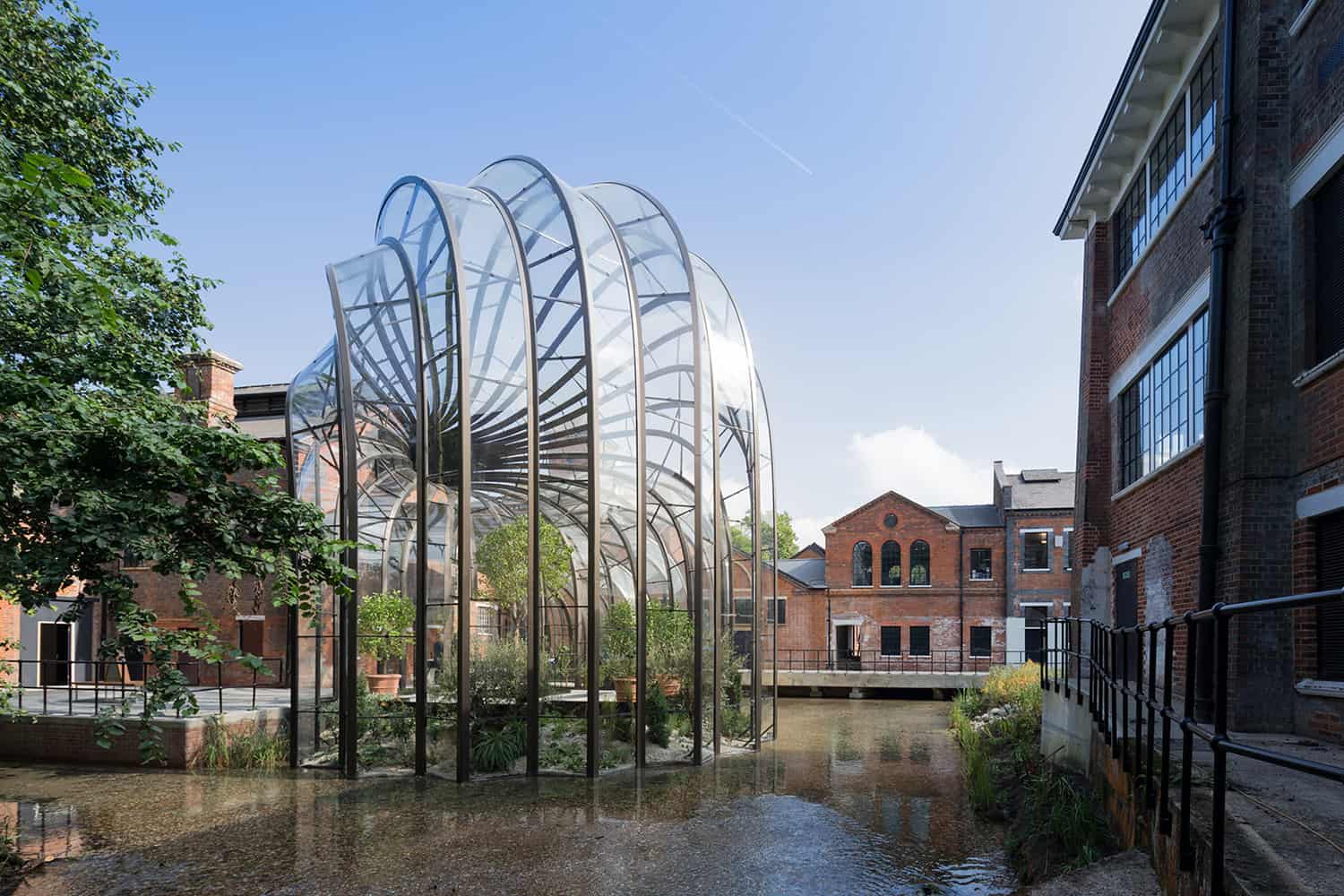Dryers have become one of those must-have home appliances—because honestly, who has the patience to wait for clothes to air-dry anymore? But as energy costs climb and environmental concerns grow, it’s worth asking: how much electricity does your dryer actually eat up? The answer depends on several factors, from the model you own to how you use it. If cutting down on power bills (and maybe even being a little kinder to the planet) sounds like a good plan, stick around. We’re breaking down the ins and outs of dryer energy consumption and how to keep it in check.
Let's get started!
What Is a Dryer and How Does It Work?
At its core, a dryer is basically a heat-powered wind tunnel for your laundry. You toss in your damp clothes, press a button, and let science do the rest. But what’s actually happening inside?
Once the machine starts, a heating element—or a gas burner, if you’ve got a gas model—fires up to warm the air. That hot air is then blasted into the drum, where it circulates as the clothes tumble around. The heat pulls moisture out of the fabric, and depending on the type of dryer, that moisture either gets vented outside or condensed into water and collected in a tank. In short, your clothes get dry, and your electricity meter gets a workout.
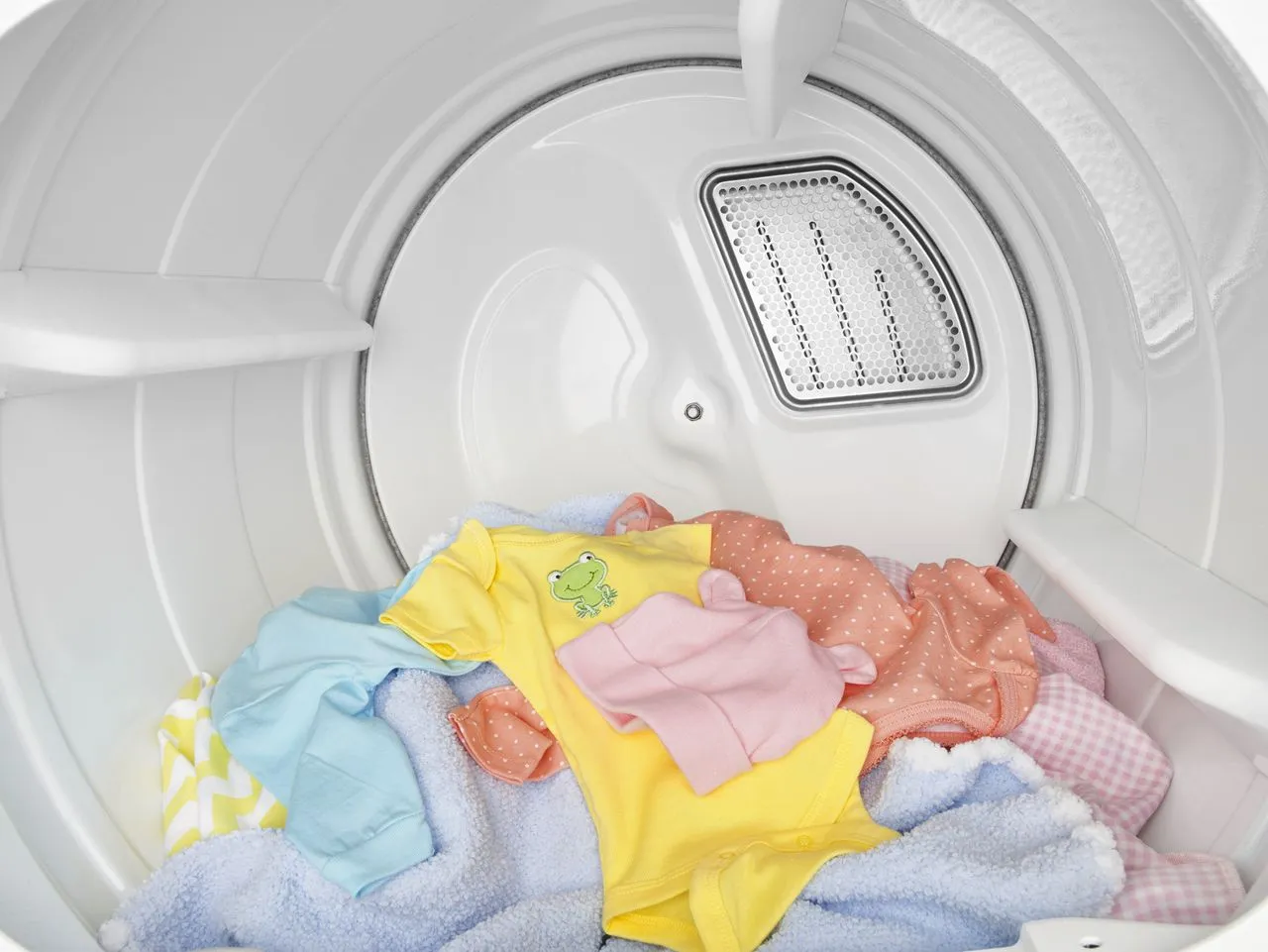
Image credit: donsappliances.com
Modern dryers aren’t just spinning clothes in circles and blasting heat anymore. They’ve gotten a lot smarter. Many now come with built-in moisture sensors that actually know when your laundry is dry, shutting off the machine before it wastes energy or turns your favorite sweater into doll-sized attire. That means less power wasted, fewer accidental clothing casualties, and a lower electricity bill—not bad for a machine that used to just run on a timer and hope for the best.
And dryers aren’t stopping there. Some come with steam cycles that freshen up clothes and smooth out wrinkles without a full wash, while others have specialized settings for delicate fabrics or oversized loads. Toss in fabric softeners for wrinkle-free results.
Note: Understanding how a dryer works will help us apprehend what exactly uses electricity in a dryer.
So, How Much Electricity Does a Dryer Use?
Understanding how a dryer operates helps break down where all that energy is vanishing. The heat? The tumbling? The little light inside the drum that probably doesn’t use much but still somehow feels important? Let’s crunch the numbers.

Image credit: express.co.uk
If you’ve ever wondered whether your dryer is secretly the biggest energy hog in your house, let’s settle that with some quick math. The key number here is the power rating, which you’ll usually find on a label somewhere on the machine. It’s measured in watts (W) or kilowatts (kW).
To figure out how much energy your dryer chews through in an hour, take its power rating and divide by 1,000 (to switch from watts to kilowatts).
For example, if your dryer runs at 2,000 watts (or 2 kW), that means every hour it’s running, it’s devouring 2 kilowatt-hours (kWh) of electricity. Multiply that by how many loads you do in a week, and you’ll get a clearer picture of whether your dryer is just another household appliance—or a secret villain in your utility bill drama.
Cost of Running Clothes Dryers
Ever wondered how much your dryer is quietly adding to your electric bill? It’s not just about flipping a switch and walking away—it’s about power, time, and what your utility provider charges per kilowatt-hour. Luckily, cracking the code isn’t rocket science.
You just need three things:
- Your dryer’s power consumption (measured in kilowatts, or kW).
- How long it runs per cycle or per day.
- Your electricity rate (check your bill—it’s usually in cents per kilowatt-hour).
Now, plug it all into this equation:
Cost = (Dryer’s Power in kW) × (Time Used in Hours) × (Cost per kWh)
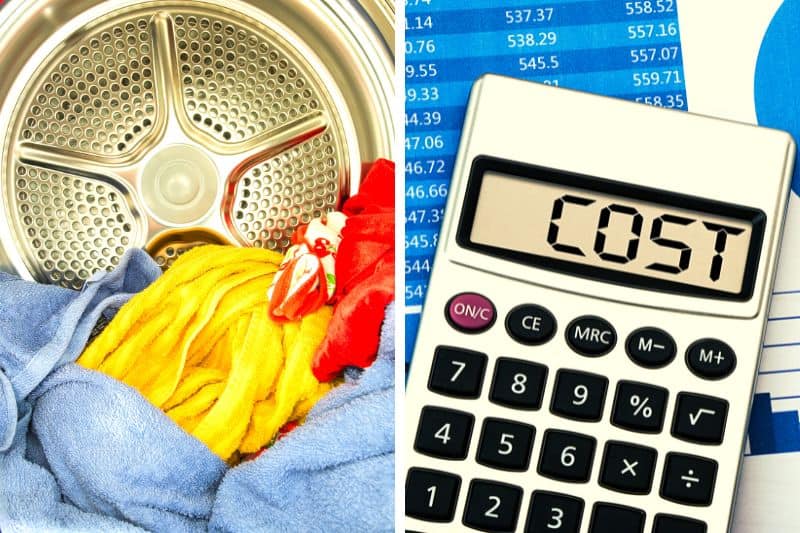
Image credit: inthewash.co.uk
Say your dryer runs at 2.5 kW, you use it for an hour daily, and your electricity costs $0.155 per kWh.
2.5 kW × 1 hour × $0.155/kWh = $0.3875 per day
That might not sound like much, but over a month, that’s about $11.63, and in a year? Around $140. And that’s if you’re running it efficiently—add in extra loads, longer drying times, or a clogged vent, and that number climbs fast.
Remember: these calculations estimate dryer energy usage and actual costs may vary based on regional electricity rates, dryer efficiency, and usage patterns.
Factors Influencing How Much Electricity a Dryer Uses
A clothes dryer can use a lot of electricity due to several factors. Here are some of the key reasons:
1. Old or Inefficient Model
Older dryers or those with outdated technology may consume more electricity than newer, energy-efficient models. Newer dryers often have improved insulation, better heating elements, and advanced sensors to optimize drying time and energy usage.
2. Overloading the Dryer
Putting too many clothes in the dryer at once can reduce airflow, making the dryer work harder and longer to dry the load. This can significantly increase power consumption.

Image credit: rd.com
3. Poor Maintenance
A dryer with clogged lint filters, blocked vents, or dirty condenser coils will have reduced airflow, leading to longer drying times and higher energy usage.
4. Incorrect Settings
High heat settings for clothes requiring low or medium heat can consume more electricity than necessary.
5. Frequent Use
The cumulative energy consumption will increase if the dryer is used excessively throughout the day, especially when drying your pillows.
6. Long Drying Times
If clothes are not properly spun in the washing machine before transferring them to the dryer, excess water in the load will increase drying time and energy usage.
7. Inadequate Ventilation
Poorly vented dryers can't efficiently expel hot, moist air, leading to extended drying cycles and higher electricity consumption.
8. Location and Ambient Temperature
If the dryer is placed in a warm area or exposed to direct sunlight, it may have to work harder to cool down while drying, resulting in higher energy usage.
9. Frequency of Cleaning the Lint Trap
Regularly cleaning the lint trap allows for better airflow, reducing drying time and energy consumption.
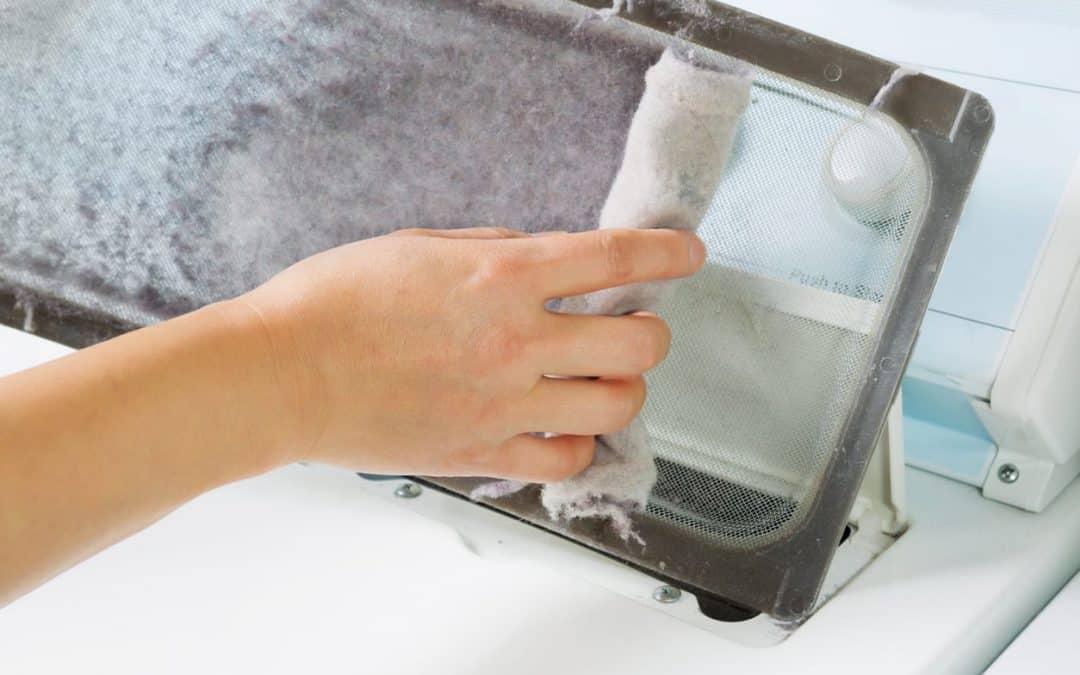
Image credit: tntdryervent.com
10. Electricity Rates
Higher electricity rates in certain regions can also increase dryer operations' electricity costs.
Tips on Reducing Your Dryer’s Energy Consumption
Your dryer is probably one of the biggest energy hogs in your house, but the good news? You don’t have to let it run wild. A few smart habits can cut down your energy use, save you some cash, and even keep your clothes looking fresh longer. Here’s how to get the most out of your dryer without racking up a massive electric bill:
- Lint filter: Clean it like your life depends on it – Okay, maybe not your life, but definitely your safety. A clogged lint filter makes your dryer work harder, wastes energy, and—worst case—can cause a fire. Just swipe it clean after every load. It takes five seconds.
- Full loads, but don’t go overboard – If you’re drying one T-shirt at a time, you’re throwing money out the window. But stuffing the dryer to the brim is just as bad—poor airflow means longer drying times. Find the sweet spot.
- Spin, spin, spin – Your washing machine is your dryer’s best friend. Use the highest spin speed available to wring out as much water as possible before the clothes even hit the dryer. Less moisture = faster drying.
- Don’t mix heavy and light fabrics – Towels and T-shirts don’t dry at the same speed, so why make them suffer together? Keep lightweight clothes separate so they don’t get over-dried while the heavy stuff is still damp.
- Trust the moisture sensor (if your dryer has one) – Let technology do the work. Dryers with moisture sensors will shut off when your clothes are actually dry, instead of running on a timer and wasting energy.
- Timed drying? Don’t go overboard – If your dryer doesn’t have a moisture sensor, don’t just set the timer and walk away. Start with less time than you think you need and check on it. Better to add a few minutes than waste 20.
- Check the vent and ducts – A clogged dryer vent isn’t just an energy problem—it’s a fire hazard. If you haven’t checked yours in a while, do it. Better airflow means faster drying times and lower bills.
- Air-dry when you can – Sunshine is free. So is a drying rack. If the weather’s nice, hang your clothes outside. If not, an indoor rack works too. It’s the easiest way to cut energy use to zero.
- Upgrade if your dryer is ancient – Older dryers are electricity-guzzling dinosaurs. If yours has been around since flip phones were cool, consider switching to an Energy Star model for an energy-efficient home. Heat pump dryers, in particular, use way less power.
- Time your loads strategically – Some power companies charge less for electricity at night or on weekends. If yours does, shift your laundry schedule to those off-peak hours and pay less for the same work.
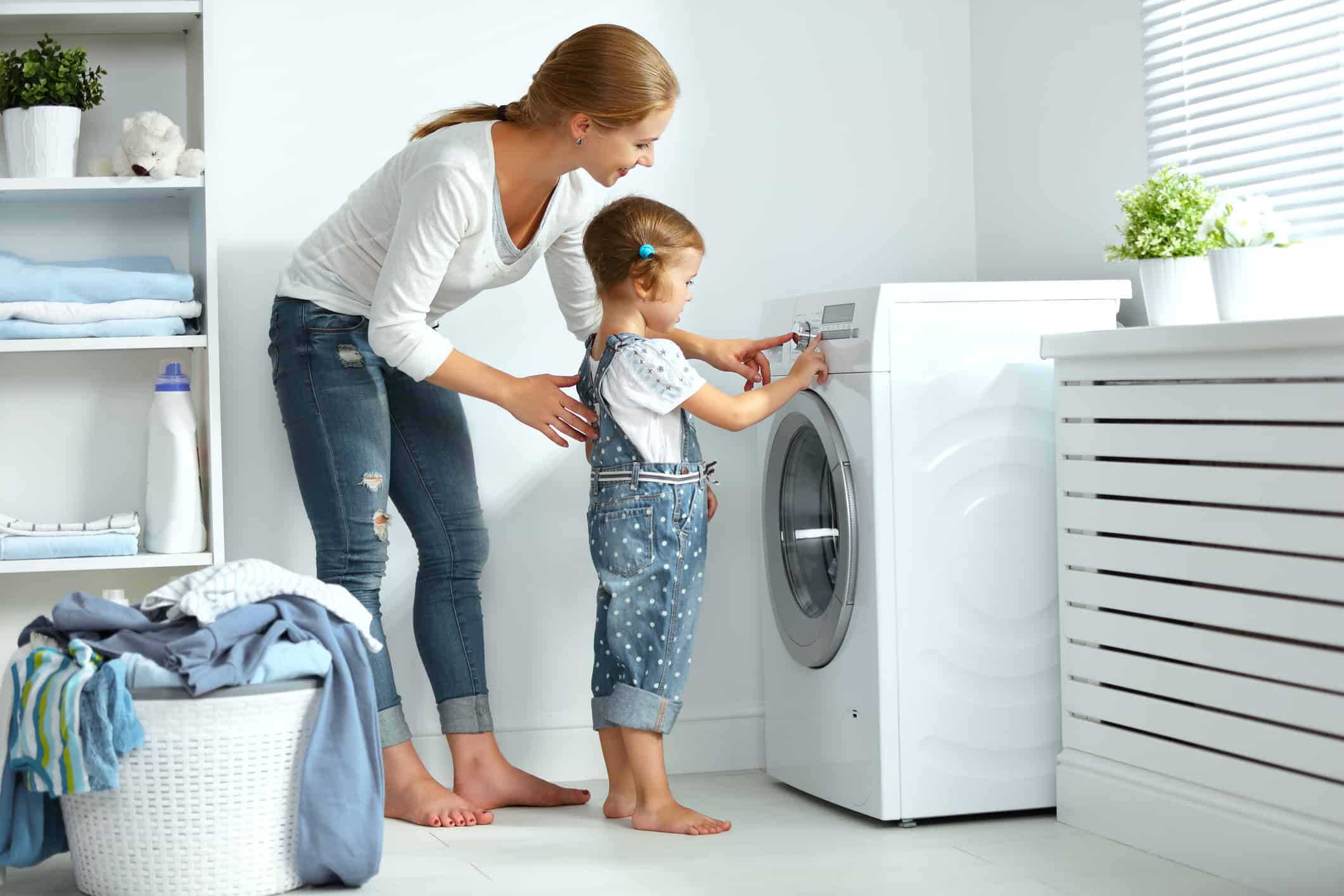
Image credit: appliancesonline.com.au
Frequently Asked Questions on How Much Electricity Does a Dryer Use
a) Does a dryer use more electricity than a washer?
Yeah, no contest. Washers mainly use power to spin and pump water, which isn’t too demanding. Dryers, though? They blast heat to pull moisture from your clothes, and that takes a lot more energy. Exact numbers depend on the model and settings, but dryers almost always use way more electricity than washers.
b) Do electric clothes dryers use a lot of electricity?
Oh, for sure. Electric dryers are some of the biggest energy guzzlers in a home. They pull anywhere from 3.3 to 6.1 kWh per load, sometimes more if you’re dealing with an older model. That might not sound like a lot, but if you’re running loads every few days, it adds up fast on your bill.
c) Which dryer uses less electricity?
Gas dryers usually win since they use natural gas instead of electricity for heat, making them cheaper to run. But if gas isn’t an option, look for an energy-efficient electric dryer with heat pump tech or moisture sensors. These adjust drying time based on how damp your clothes actually are, so they don’t waste energy running longer than needed. If it has an Energy Star label, that’s a good sign it won’t destroy your power bill.
Conclusion
Dryers aren’t exactly gentle on your electricity bill, but you can keep costs down with a few easy tricks. Dry full loads instead of a couple of shirts at a time, clean out the lint trap so air flows better, and use lower heat settings when possible. And if you’re thinking about upgrading, an energy-efficient model can save you a ton of money in the long run.


